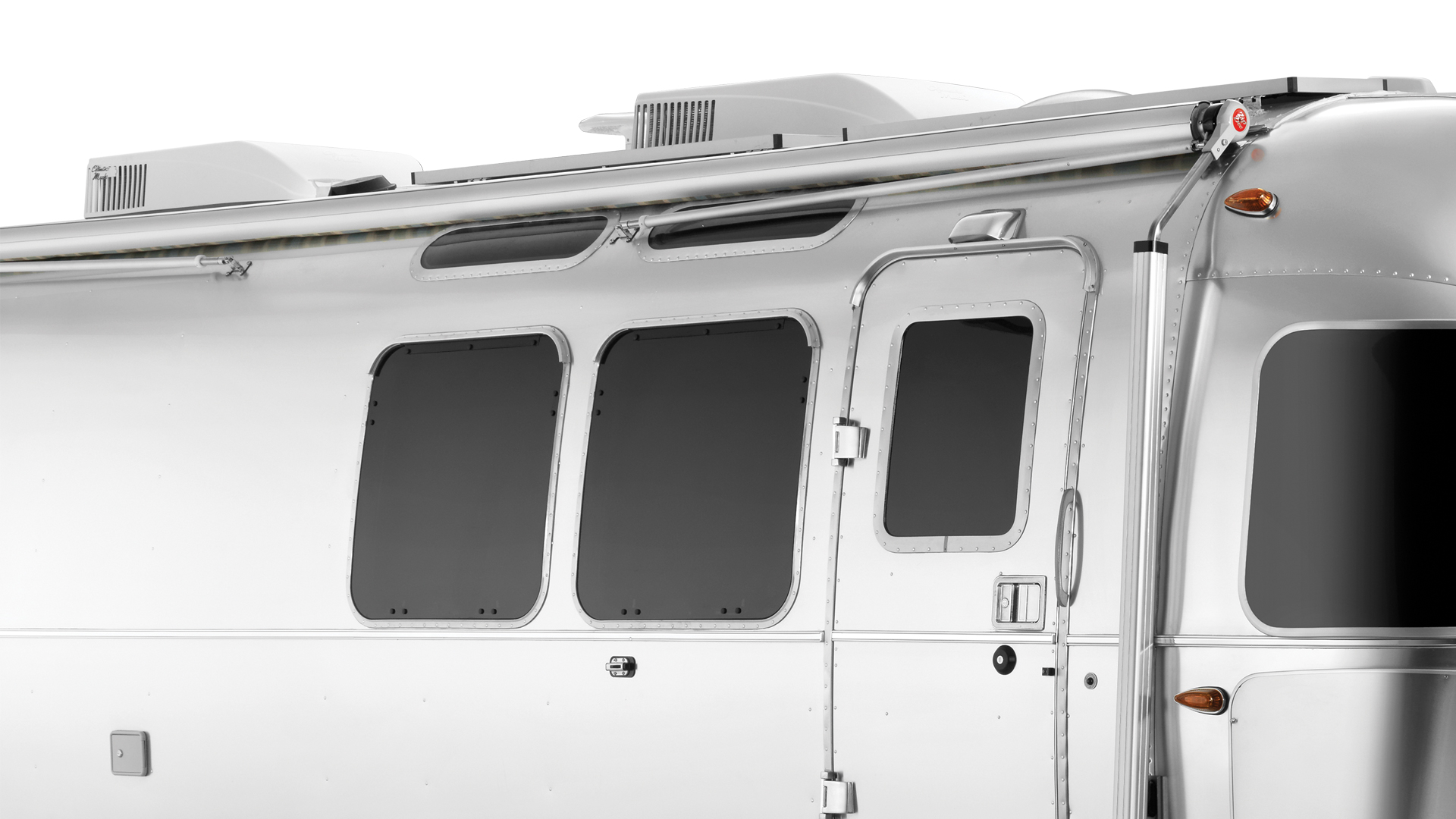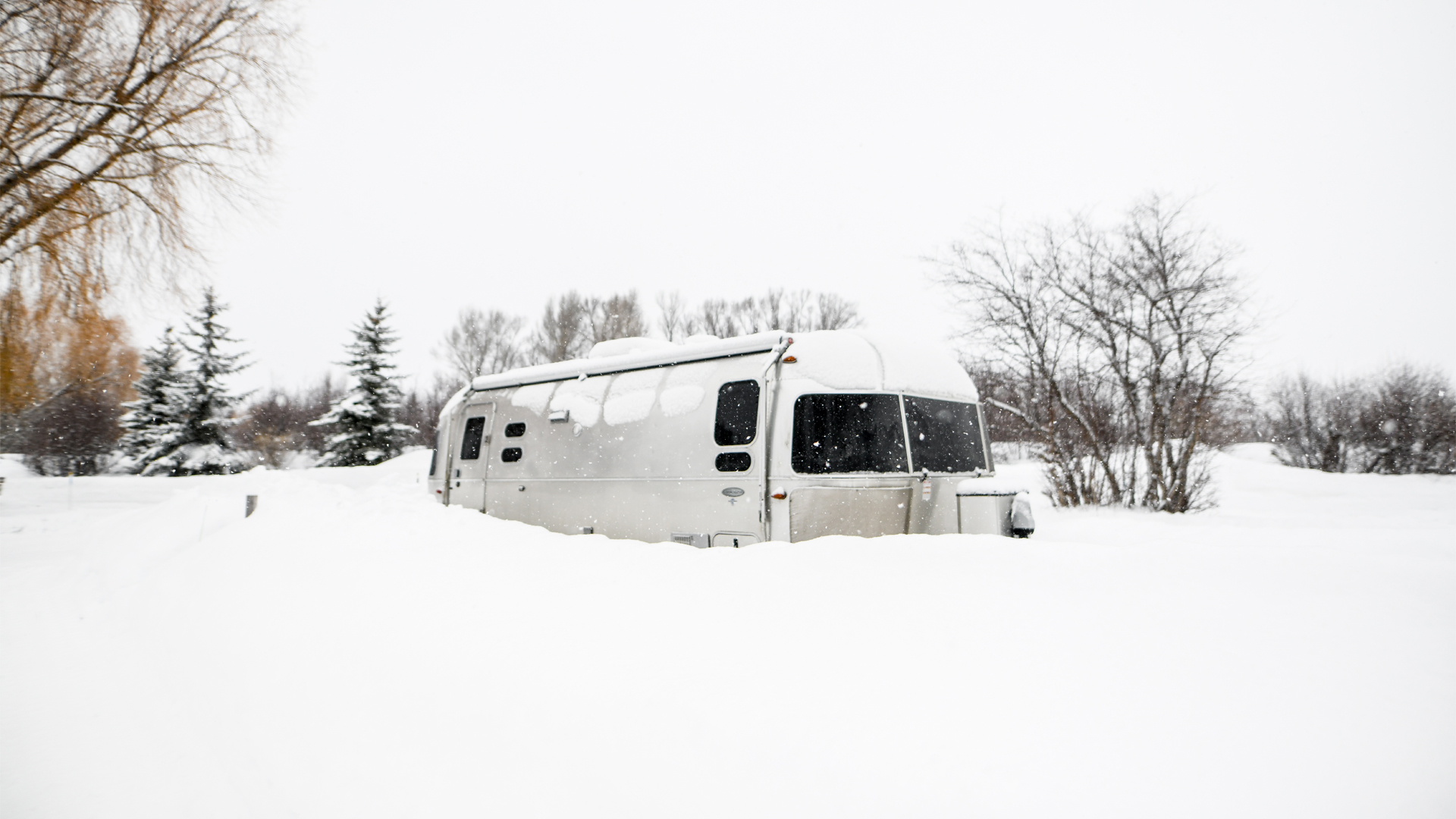You’d be forgiven for thinking of your Airstream’s air conditioner as a device that keeps you warm. Coming back to a cool, comfortable place to relax after a hot summer day of outdoor activities is one of the best things about an Airstream – one of the comforts of home we love to take along when we travel.
But hidden inside your Airstream’s rooftop air conditioning unit is a powerful, versatile, and efficient means of cutting the chill and warming up on chilly days: a heat pump (or its close cousin, the heat strip). Every Airstream travel trailer comes standard with an air conditioner and heat pump, except Bambi Travel Trailers and Basecamps which include heat strips instead of heat pumps. These quiet, efficient devices run on electricity and can warm you up on chilly mornings – without having to burn propane running your furnace.
Furnace vs. Heat Pump
Your Airstream travel trailer features a highly efficient heating system anchored by a furnace fueled by liquid propane gas (LPG). Small but mighty, your Airstream furnace keeps you warm and toasty – as long as you have propane in the tanks. The blower that circulates warm air throughout your travel trailer runs on electricity, but its low power draw makes the furnace a great option for maintaining your batteries when you’re camping off the grid in colder temps.
But for those times when you’re hooked up to shore power at a campsite, your Airstream’s heat pump is the perfect option when you wake up on a chilly morning. Rather than firing up the furnace and consuming precious propane, set your Airstream’s thermostat to the heat pump setting (usually indicated by an HP or similar on the thermostat display). As long as the ambient exterior temperature is above about 40 degrees Fahrenheit, the air conditioner’s heat pump will warm the air inside your Airstream and cycle it through the QuietStream ductwork in the ceiling. You’ll be warm by the time the coffee has brewed – and you won’t have burned any propane in the process.

Choosing between the heat pump and the furnace is easy – simply choose the desired function on your Airstream’s thermostat. On recent Airstream thermostats, the furnace is typically labeled FURN and the heat pump option is typically labeled as HP (again, check your manual for exact operation).
The Technology Behind the Magic of a Heat Pump
Air conditioners do the magical work of turning warm air into cool, refreshing comfort, but the same technology works in reverse when you turn on your heat pump. To understand how a heat pump works, you must first understand the process of how an air conditioner works.
The reality of air conditioning technology is less about creating cold air and more about removing the heat from the interior air and transferring it outside. A byproduct of this process is that cool air is created and cycled back inside via a blower and vents.

The key to all this working is the refrigerant inside the air conditioner system, typically found in either a fluid or gaseous state, depending on the temperature and pressure. The refrigerant flows through the system via copper coils, beginning with a cold evaporator coil. As warm air is cycled around the cold evaporator coil, the refrigerant inside the coil warms up and changes from a liquid to a gaseous state while continuing to flow toward the air conditioner’s compressor. During this heat transfer process, the refrigerant absorbs the heat as the warm air cools down before it is cycled back into the interior to create a comfortable environment.
Meanwhile, the warm, gaseous refrigerant inside those copper coils keeps flowing into the air conditioner’s compressor. Inside the compressor, the warm refrigerant is pressurized, further increasing its temperature. The now superheated vapor passes into the condenser where it is exposed to exterior air. Heat is absorbed into the exterior air, lowering the refrigerant’s temperature again, changing it back into a liquid state as it cycles back around to start the process over again.
This heat transfer process continues until the thermostat registers the air has cooled to the set temperature, halting the process until the temperature rises again.
Reversing the Process for Warm Air
Simply put, an A/C’s heat pump setting reverses the flow of refrigerant, as well as reversing the roles of the interior evaporator coil and exterior condenser coil. Cold air still carries heat energy, and as long as the exterior temperature is about 40 degrees Fahrenheit or higher the condenser can absorb that heat energy in an exchange that cools down the refrigerant. The cool refrigerant is pressurized, which turns it into a hot gas that passes into the interior coil where the cool inside air is cycled through by the blower. The hot refrigerant inside the coil warms the flowing air as it cycles back through your ducts. Then the refrigerant is cycled back around to the exterior coils to keep the process moving.
What About Heat Strips?
For owners of Basecamp, Airstream Bambi Travel Trailers, and some older models (check your user’s manual for details on your air conditioning system), similar heating results are achieved via the utilization of a heat strip rather than a heat pump. While a heat pump creates warm air through a process of pressurization and heat transfer, the heat strip in your Basecamp or Bambi Travel Trailer creates warmth by passing air over wires heated by the flow of electricity. The heat pump is one of the selections on your A/C’s control dial.
This process is called resistance heating, and devices with this type of heating element are common in many homes and RVs – electric furnaces, electric baseboard heaters, and many space heaters utilize electric resistance to create heat. Any wire will get hot when you force enough electricity through it – you see (and feel) this in incandescent light bulbs and the glowing wires down inside a toaster. In general, the more resistance that electricity encounters as it flows through a wire, the more the wire heats up. This is why many electric appliances and gadgets heat up when powered on, and why computers and electronic equipment often require fans and blowers to limit the heat.
Heat can be bad for sensitive electronics equipment, but when it comes to comfort, the heat produced by the flow of electricity can be useful. While there is a lot more technology behind it, resistance heating is the process at the heart of your Bambi’s heat strip. Warm air is cycled through the system and passed across wires superheated by the flow of electricity through them.
Electric or Gas: You Have Options in Your Airstream
Whether you’re heading off the grid for a couple days or camping in the relatively luxury of a full-hookup campground, your Airstream travel trailer comes with multiple options for cutting the chill. If you’re taking on the thrill and challenge of cold-weather winter camping, your furnace is there to create a warm and toasty interior to come back to after a cold hike.

And if you’re camping in the shoulder seasons of Spring or Autumn, the heat pump or heat strip in your air conditioner will provide much of the warmth you need on chilly mornings before the sun is fully up.
Have other questions about the various features and functions in your Airstream travel trailer? Dig into our new Airstream Support site for specific information about your model or browse through Airstream Academy for general info on hitching, towing, camping, and more.











